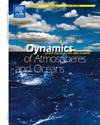Evaluating weather trends and forecasting with machine learning: Insights from maximum temperature, minimum temperature, and rainfall data in India
IF 2
4区 地球科学
Q2 GEOCHEMISTRY & GEOPHYSICS
引用次数: 0
Abstract
This research presents a comprehensive evaluation of meteorological trends using a combination of statistical and machine learning approaches, focusing on rainfall, minimum temperature (MinT), and maximum temperature (MaxT). The Mann-Kendall trend test and Sen’s slope estimator identified statistically significant upward trends in both MaxT (slope = 0.0154, p = 9.42E-06) and MinT (slope = 0.0190, p = 4.73E-07), indicating a consistent warming climate. Rainfall displayed a positive trend but was not statistically significant (p = 0.9516, slope = 4.07E-05), suggesting random variability rather than a sustained increase.Machine learning models were leveraged to enhance forecasting accuracy for these meteorological parameters. ARIMA exhibited the highest precision for MaxT and Rainfall (MAE = 3.0080, 0.1728; RMSE = 3.4967, 0.2916), while XGBoost demonstrated superior performance for MinT (MAE = 2.7726, RMSE = 3.8555). These findings highlight the critical need for climate adaptation measures, as rising temperatures could intensify heatwaves, escalate energy demands, and affect agricultural productivity.The study underscores the importance of integrating advanced forecasting techniques to support proactive climate resilience planning. By incorporating machine learning models with traditional statistical analyses, this research provides valuable insights into climate trends, aiding policymakers and researchers in formulating effective climate adaptation strategies.
用机器学习评估天气趋势和预测:来自印度最高温度、最低温度和降雨数据的见解
本研究结合统计和机器学习方法对气象趋势进行了综合评估,重点关注降雨量、最低温度(MinT)和最高温度(MaxT)。Mann-Kendall趋势检验和Sen斜率估计发现,MaxT(斜率= 0.0154,p = 9.42E-06)和MinT(斜率= 0.0190,p = 4.73E-07)的上升趋势具有统计学意义,表明气候持续变暖。降雨量呈上升趋势,但不具有统计学意义(p = 0.9516,斜率= 4.07E-05),表明降雨量是随机变异而非持续增加。利用机器学习模型来提高这些气象参数的预测准确性。ARIMA对MaxT和Rainfall的精度最高(MAE = 3.0080, 0.1728;RMSE = 3.4967, 0.2916),而XGBoost在MinT上表现出优异的性能(MAE = 2.7726, RMSE = 3.8555)。这些发现强调了采取气候适应措施的迫切需要,因为气温上升可能加剧热浪,增加能源需求,并影响农业生产力。该研究强调了整合先进的预测技术以支持积极的气候适应能力规划的重要性。通过将机器学习模型与传统的统计分析相结合,本研究为气候趋势提供了有价值的见解,帮助政策制定者和研究人员制定有效的气候适应战略。
本文章由计算机程序翻译,如有差异,请以英文原文为准。
求助全文
约1分钟内获得全文
求助全文
来源期刊

Dynamics of Atmospheres and Oceans
地学-地球化学与地球物理
CiteScore
3.10
自引率
5.90%
发文量
43
审稿时长
>12 weeks
期刊介绍:
Dynamics of Atmospheres and Oceans is an international journal for research related to the dynamical and physical processes governing atmospheres, oceans and climate.
Authors are invited to submit articles, short contributions or scholarly reviews in the following areas:
•Dynamic meteorology
•Physical oceanography
•Geophysical fluid dynamics
•Climate variability and climate change
•Atmosphere-ocean-biosphere-cryosphere interactions
•Prediction and predictability
•Scale interactions
Papers of theoretical, computational, experimental and observational investigations are invited, particularly those that explore the fundamental nature - or bring together the interdisciplinary and multidisciplinary aspects - of dynamical and physical processes at all scales. Papers that explore air-sea interactions and the coupling between atmospheres, oceans, and other components of the climate system are particularly welcome.
 求助内容:
求助内容: 应助结果提醒方式:
应助结果提醒方式:


